![]()
![]()
![]()
Use LEFT and RIGHT arrow keys to navigate between flashcards;
Use UP and DOWN arrow keys to flip the card;
H to show hint;
A reads text to speech;
46 Cards in this Set
- Front
- Back
|
Rsquare |
proportion of variance explained by model SS model/SStotal |
|
|
assumptions for parametric test |
data is independent residuals normally distributed; not correlated with model; not correlated with explanatory variables; heteroskidasticity |
|
|
type 2 error |
don't see pattern when there actually is accept a false null hypothesis |
|
|
ancova hypothesis tests |
slopes equal to 0 slopes parallel (compare to each other) elevation of slopes |
|
|
p value: define, mean, derived, a value |
probability that H0 is true derived from F distribution where higher F value, more likely that H0 is NOT true alpha <.05 is commonly used criterial to call result significant |
|
|
what do you do with trend line in a figure once you have established slope is 0 |
remove trend line from figure, tate no statistically significant difference between two variables
check residuals for diff model |
|
|
limiting nutrient in NASG; differ than others? main factors |
phosphorous; most others limited by nitrogen because lack iron for nitrogen fixation. iron supplied by saharan dust |
|
|
how do heterotrophic acquire organic nutrients |
excrete exoenzymes that dissolve their food, transport (usually actively) across cellular membrane |
|
|
dilution experiment values |
y int = instantenous growth rate (K) slope = instantaneous grazing rate (G) K-G apparent growth rate
both per time |
|
|
dilution experiment assumptions |
phytoplankton specific growth rate independent of concentration (don't compete) microzooplankton grazing linear function of prey abundance (don't eat faster or get full) grazers don't grow during incubation |
|
|
what limits PP in HNLC of eastern north pacific |
iron; quickly used up by phytoplankton who need it to grow. main source is upwelling (little by wind and rain)
|
|
|
ocean hypothesis
critical period - match mismatch - stable ocean |
'1914 norwegian herring very strong later, stages dependent on egg/larvae stage
marine fish time reproduction so larval development matches periods of high productivity (blooms)
successful year classes result of spatio-temporal match between first feeding larva and availability of suitable bloom
ocean must be very patchy, clustered something like marine snow
lab studies show amount of zooplankton needed to feed anchovies massively huge |
|
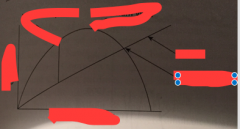
|
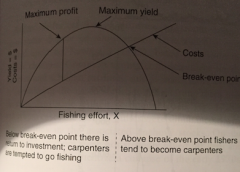
|
|
|
measure standing stock of phytoplankton? how does this compare to the measurements of primary production? |
chlA = standing stock ug/L PP = C14 incorpation ugCincorporated/time hl gives phytoplankton population while C gives rate of growth |
|
|
2 important factors in bacterial mortality |
virus infection flagellate predation |
|
|
adaptations of deep sea organisms, examples |
sensors that pick up movement
gulper eels eat everything biolum = copepods shoot attach to mate = angler fish red shrimp can't be seen large eyes = elephant pod photophores - match light from above |
|
|
2 biological, 2 physical variables that interact to create horizontal band of species distribution in rocky intertidal |
physical: desiccation (easy to dry out must be able to keep water in) high water activity = must hold tight
biological - competition for space predation prevents some from going into others |
|
|
ETM for anadromous fish |
concentrates particles, including zooplankton; high concentrations of food for andronmous |
|
|
removing disaster from rocky intertidal |
mussels would take over and push everyone else out |
|
|
sinking fluxes and PP f ratio |
new nitrogen to total nitrogen input? high f ratio high sinking flux because new is an outside source of nitrogen to the surface water
increasing N causes phytoplankton to bloom especially diatom and sinking of them provides flux of organic matter |
|
|
2 methods of estimating sinking fluxes of POM |
sediment traps; sit at given depth and get whatever hits them video plankton recorder; water flows through and picture are taken most often used for plankton. particles that pass through time yields flux |
|
|
4 components of biological pump; which has largest effect on vertical sinking velocities |
archimedian - fecal pellets and carcasses (Gravity) recipriciting (diel vertical migration upa nd down) rotary -recylcing between organism in surface waters carbonite carbonate tests
archimedian pump has largest effect on vertical sinking flux because it is a direct flux of particles in deep |
|
|
strategy of plankton position maintenance to avoid getting washed out |
regulate buoyancy, ride salt wedge up estuary and ebb tide out; vertically migrate over tidal cycle |
|
|
2 oscillations other than el nino |
pacific decadal - cold/warm regime, shifts anchovy to sardine atlantic oscillation, high to low portugal iceland |
|
|
upwelling systems - sinks or sources of atmospheric CO2 |
source - cold pressurized deep water comes to surface; warming and release forces CO2 out of water and into atmosphere like opening coke |
|
|
sites of AABW |
sink; colder water holds more dissolved gasses and are rich in dissolved CO2 due to extreme cold and dense |
|
|
marine snow composed of |
aggregated TEP catching living and non living particles = fecal pellets, carcasses, plankton and appendicularian houses glue is TEP (operationally defined as stainable by Alcian blue) |
|
|
method to measure hydrolytic enzyme |
fluorescent substrate to measure enzyme activity and michaelis - mention kinetics to determine max (maximum turnover velocity of enzyme) |
|
|
fundamental connection between P and growth (growth rat hypothesis) |
RNA is fundamental connection between P and Growth because RNA codes for production of proteins and proteins require for goth; have have very little to no P but RNA requires it |
|
|
3 adaptions of mangroves |
prop roots (soft sediment) suck in O2 through pneumatophores that poke seeds germinate on trees and drop into water membranes prevent salt entering |
|
|
how analyze chlorophyll |
fiter to catch all phytoplankton, acetone to extract. sonicate to disrupt, centrifuge to separate chlorophyl from biomass use spectrophotmer to test wavelength |
|
|
mutualism |
both species helped by other coral and zooxanthale |
|
|
island biogeography |
richness dependent on size of ecosystem and number of resources, maximum number for any system based on competition more chance for extinction further away |
|
|
corraline algae do? |
hold reef together |
|
|
substance theory of atolls |
coral reef forms close to land, land subsides slowly until lagoon forms were island was |
|
|
largest habitat of ocean floor; dominant phylum |
abyssal plane, echinoderms |
|
|
where hydrothermal vents |
edges of tectonic plates where steam emitted |
|
|
riftia |
annelids |
|
|
POM size |
smaller than picoplankton (.2 um) sometimes .045 |
|
|
Labile vs refractory |
usable, unusuable(can be split by UV light when returns to surface) |
|
|
RPD |
redox potential discontinuity border of oxygen and anoxic good for sulfur oxidation using H2s and O2 |
|
|
denitrification |
nitrogen instead of oxygen for respiration! (breaking down organic material)
No3 - no2 - No - N20 to N2
oxygen minimum zones! |
|
|
annamox |
bacteria only, ammonium (waste) and nitrate yields nitrogen and water |
|
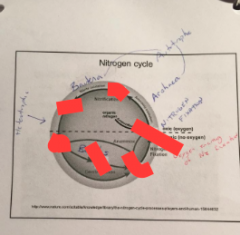
|

|
|
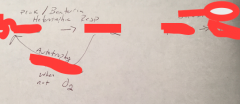
|
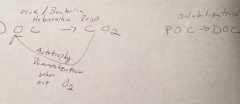
|
|

|

|

